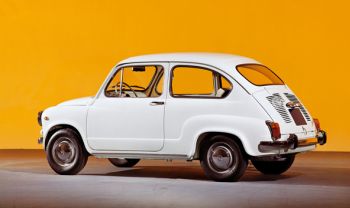|
The Fiat 600,
the car that really put Italy on the road, was launched
fifty years ago, but still retains that magical aura created
by Felice Casorati in his famous poster of the car against a
surreal night-time Turin.
It was 1955, and Italy was about to embark on a new era of
political and social history: in fits and starts, life was
getting back to normal after the tragedy of the war, which
had left behind a present full of uncertainty and an equally
precarious future. It was up to the willpower and
imagination of the Italians to achieve a difficult but
possible rebirth. This was the context in which the
'great-little' Fiat 600 was born, a car that was small in
size but with huge potential. It was designed by Dante
Giacosa, the famous engineer who worked incessantly from
1951 on to develop a four-seater runabout, with a rear
engine, that was both light and sturdy. And above all, with
a price that made it accessible to the people who built it.
The project was known as the '100' within Fiat, and it was
destined to change the face of Italy. In the meantime, 300
billion lire were being invested at Mirafiori to build new
assembly lines that could meet the constantly growing
demand: output increased from 100,000 units in 1950 to
500,000 in 1960.
|
 |
|
It was designed by Dante Giacosa, the famous
engineer who worked incessantly from 1951 on to
develop a four-seater runabout, with a rear engine,
that was both light and sturdy |
|
|
 |
|
The
highly affordable Fiat 600, is the tiny car that really put
the Italian on the road when it was launched
fifty years ago |
|
|
After four years of development and experimentation, the
Fiat 600 was ready, and Dante Giacosa made it into the
newspapers. As he said himself a few years later: "In 1957,
I was invited by the Institution of Mechanical Engineers,
the historical British association, to give a Clayton
Lecture. I was received with great ceremony at the
institution's prestigious London headquarters, and gave my
lecture on 'The problems of the small runabout' to an
audience that filled two large halls, analysing the various
problems and explaining how they had been solved on the 600.
The Lecture aroused a great deal of interest, to the point
that even The Times wrote about it.
|
|
|
|
![]()
![]()